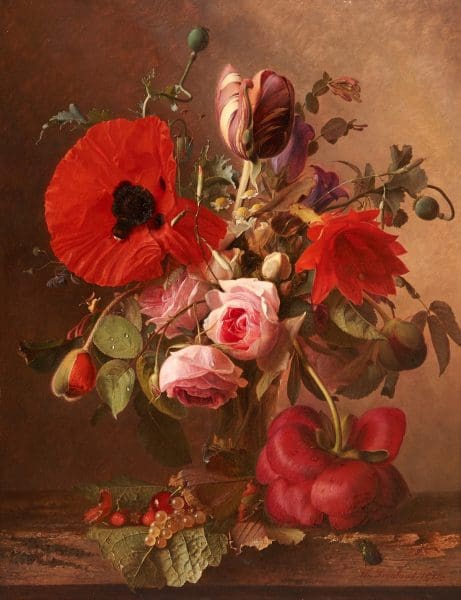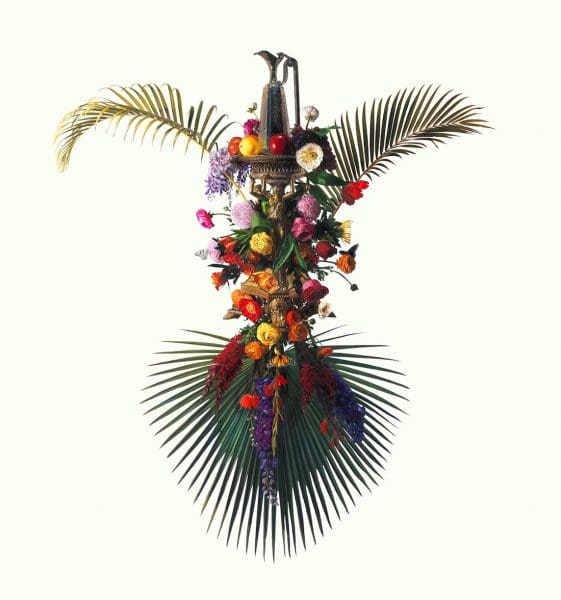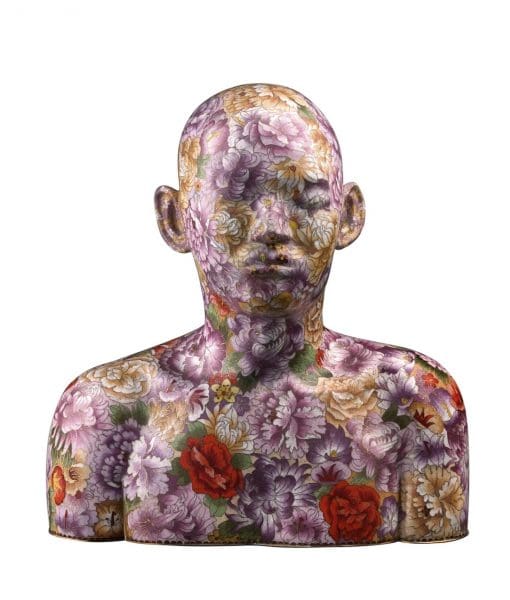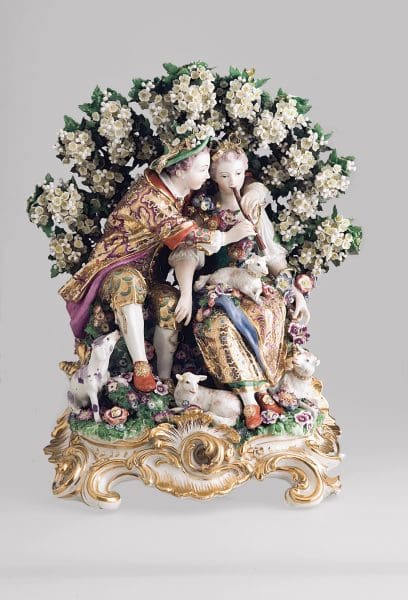
Piercing the veil
A new exhibition at Buxton Contemporary finds a rich complexity in the shadowy terrain between life and death.

Theude Grönland (France/Germany 1817–1876), Still life with flowers, 1846, France, oil on panel, 45 x 34 cm.

Nora Heysen (Australia, 1911–2003), Spring Flowers, c.1956, Sydney, oil on canvas on board, 44 x 36.5 cm. South Australian Government Grant 1956, Art Gallery of South Australia, Adelaide.

Michael Zavros (Australia, born 1974), The Phoenix, 2016, Brisbane, oil on canvas, 220 x 200 cm. James & Diana Ramsay Fund supported by Philip Bacon AM through the Art Gallery of South Australia Foundation 2016, Art Gallery of South Australia, Adelaide, Courtesy the artist and Philip Bacon Galleries, Brisbane, Jon Linkins.

Ah Xian (China/Australia, born 1960), Jingdong Cloisonné Factory, China, Human human – cloisonné bust 3, 2001, Dachang County, Hebei Province, cloisonné enamel on copper, 45 x 42.5 x 25.5 cm. Gift of ETSA Utilities and the Art Gallery of South Australia Foundation 2006, Art Gallery of South Australia, Adelaide, © courtesy the artist.

Attributed to Nicolas-Jean Marchand (France 1697–after 1770), Secrétaire abattant, c. 1765-70, France, kingwood, lacquer, gilt bronze, breche d’alep marble, 143 x 81.2 x 42 cm.

Chelsea Porcelain Factory (Britain c. 1745–1770), Joseph Willems (Britain 1716-1766), modeller, The music lesson, c. 1760, London, soft-paste porcelain, polychrome enamel, gilt, 40 x 33 cm.
Please note due to COVID-19 restrictions the exhibition Flowers: Passion. Pain. Nation. at The David Roche Foundation House Museum is currently closed. Continuing our commitment to covering the arts Australia-wide, Art Guide Australia will continue to share articles and stories on artists and exhibitions during this time, encouraging viewers to experience art online.
An exhibition focussed on so well-worn an artistic motif as flowers might, on the face of it, appear to be swimming against the tide of the current zeitgeist. As artists confront things like gender, sexuality, colonialism, technology and climate in increasingly innovative and brave ways, some might considerate it an odd moment to pause and consider the tradition of floral art. Then there is the fact that this has, at various points in history, been something of a maligned craft. The 18th-century painter Sir Joshua Reynolds, for instance, was famously dismissive of artists who depicted flowers.
However, in Flowers: Passion. Pain. Nation. the David Roche Foundation House Museum has succeeded in presenting a wide spectrum of interpretations of flowers. This allows for an understanding of just how diverse the symbolism of floral art continues to be, incorporating gender, sexuality and identity. The show’s title is a reference to this broad church.
“I wanted the title of the exhibition to encapsulate the major themes: passion, pain, nation,” says museum director Robert Reason. “These inform the big narratives of life, such as devotional and physical love, the pain of loss and our temporal existence, and how we belong to a place or country. The more I looked into the themes, the more I was struck by the incredible symbolic power of flowers.”
Reason has assembled a number of works from the private collection of the late collector Roche, and combined them with pieces from other private collections and galleries, including the Art Gallery of South Australia. The exhibition spans more than 400 years of Western art, featuring Bartolomeo Maserati’s Coronation of the Virgin, c.1580, through to Theude Grönland’s Still life with flowers, 1846, and 20th-century Australian artists such as Arthur Boyd, Nora Heysen and Grace Cossington-Smith. Contemporary artists include Del Kathryn Barton, Christian Thompson and Michael Zavros.
Reason picks out The Phoenix, 2015, by Zavros, as one piece he is particularly excited about. He also cites Max Dupain’s controversial (for its time) The Debussy Quartet in G, 1937, as an example of his curatorial emphasis on sensuality and eroticism, and Elise Blumann’s Sunflowers, 1939, as an example of an artist distorting tradition to arrive at a new interpretation of the floral still life.
“It might not look it today,” says Reason, “but Blumann’s Sunflowers, when painted in Perth in the late 1930s, was incredibly avant-garde. Look at how boldly it is painted – raw, energetic and simplified. What must have traditionalists thought when they saw that in 1939?”
Both Blumann and Dupain fit firmly into modernism, and indeed this period of Australian art is heavily represented: Cossington-Smith, Margaret Preston, Horace Trenerry and Kathleen Sauerbier all have an important place in the exhibition.
“It wasn’t until Preston and the modernist movement of the 1930s and 1940s that Australian artists started to take native flowers seriously. For them, they [native flora] gave legitimacy to the notion of creating a truly Australian art, a national art.”
However, it is arguably through the more contemporary takes on flowers that Flowers: Passion. Pain. Nation. is most exciting and provocative. This is evident in works by Barton and Thompson in particular.
“Barton’s own painting practice doesn’t often include flowers,” says Reason. “However, when she worked with Brendan Fletcher on the short film The human dress with Remy Hii, 2013, from which the photographic stills in this exhibition were taken, it focussed on the male figure of Hii engaged in an intense amorous relationship with native Australian flora, especially the waratah.”
Reason adds, “Christian Thompson, in contrast, uses exotic and native flowers regularly in conjunction with his own image. On Becoming, 2015, is a continuation of Thompson’s contemplation on his identity – his being of both Aboriginal and European descent and how this informs his identity. Flowers are in a dialogue with his narrative, they take on new symbolism, and move the tradition of flower painting into the 21st century.”
Flowers: Passion. Pain. Nation.
The David Roche Foundation House Museum
20 February – 2 May